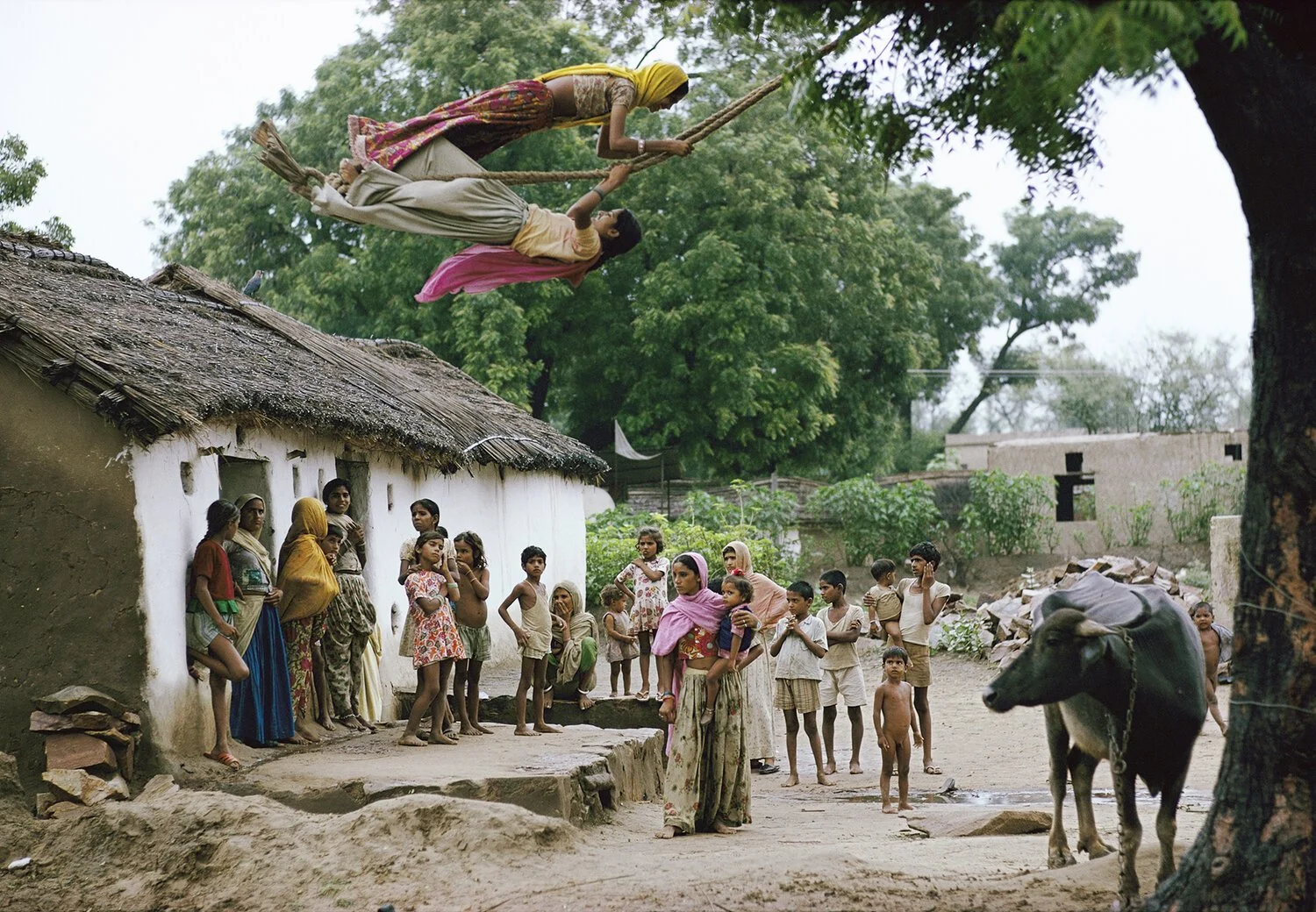From Our Archives: Raghubir Singh
This essay on Raghubir Singh by Lev Feigin entitled “Welcome Home” was originally published in Musée Magazine Issue 18: Humanity.
Ram Rahman, Raghubir Singh, Delhi, 1982.
Raghubir Singh, whose name in the world of photography is inseparable from India, was born to an aristocratic family in Jaipur, Rajasthan. Singh lived in Hong Kong and continuously returned to his native land – the inexhaustible muse of his 35 mm color photography – until his untimely death in 1999 at the age of 56. A pioneer colorist, Singh discovered the ecstasy of color during his countless journeys across the Indian subcontinent: on the banks of the Ganges – he travelled the river from its source in the Himalayas to the Bay of Bengal – in the Kashmir mountains, in remote villages, in the bustle of city crowds.
Ram Rahman, Monsoon Rains, Monghyr, Bihar, 1967.
In Singh’s images, the rich, seductive hues of India, the vermillion of women’s saris, the saffron of sadhus’ robes, the ruby of turbans, mingle with the tawny browns of earth after a monsoon and the kaleidoscopic, eye-popping colors of Westernization: omnibuses, plastic bags, television sets, posters, storefronts, cars.
Ram Rahman, On Vivekananda Rock, Kanya Kumari, Tamil Nadu, 1994.
Singh turned to photography after high school, having failed to find work as a tea planter in Calcutta. The city’s tea companies would not hire an upper-class young man whose family lost its for- tune after India’s independence. Instead, Singh took his camera to Calcutta’s streets. Within a de- cade he would work for National Geographic. One of his early influences was Henri Cartier-Bresson whose pictures of India from the 40s were, ac- cording to Singh, some of the first “to show Indians as individuals” – in contrast to earlier British photographers whose work trafficked in Orientalist fantasies and colonialist clichés. Years later, when Singh met Cartier-Bresson and showed him his own books, the Frenchman flipped through a few pages and set the books aside. For Cartier-Bresson, as for the era itself, the real turned art only in shades of gray.
Ram Rahman, Ganapati Immersion, Chowpatty, Bombay, Maharashtra, 1989.
What makes Singh’s images art – and thrusts them well beyond the borders of the best of travel pho- tography – is their exhilarating plunge into the polyphonies of Indian life, their search for communion among its contrasts and contradictions, their capacious density where surprises await in every inch of the composition. An electric fan keeps six-handed deities cool in a museum; a man washes his bicycle in the city while behind him an elephant crosses a dusty bus terminal; a lorry lies toppled in a cow pasture as if a fallen Icarus. Surrealism undercuts the exotic. The quotidian and the enchanting braid.
Ram Rahman, Slum Dweller, Dharavi, Bombay, Maharashtra, 1990.
What sets Singh apart from the canon of Western photography is a visual vernacular that seems to lack a syntax for alienation, for the estrangement of the figure against its historical ground. Lee Friedlander, upon his visit to India, would repeatedly ask Singh: “What would Atget have done here?” For Friedlander the modernist inflection, born on the boulevards of Baudelaire’s Paris, was no less valid on the streets of Calcutta. As Singh wrote in the introduction to his River of Colour, the American photographer looked for “the abject as subject.” To what then did Singh’s gaze turn instead?
Ram Rahman, Catching the Breeze, Hathod Village, Jaipur, Rajasthan, 1975.
In his images, Singh sought intimacy with his own civilization. He loved photographing dense crowds of worshipers at festivals: panoramas of thousands of dark heads and light robes of pilgrims bathing in the Ganges. He took pictures of village bus stops, weddings, funerary pyres, bullocks, dogs, goats, elephants, street performers, solitary yogis in the mountains, taxi drivers, dock workers, water sellers, devotees to Shiva, Christians and Muslims, women holding children in their arms or caught in the monsoon rain, kids swinging on a tree trapeze, about to fly away over the village roofs. Often com- pared to the Rajput and Mughal miniaturist paintings, Singh’s photographs radiate the bliss of being in the presence of humanity. Each is a condensation of life in all of its forms, distilled to extract its rush and cyclic transformations. Together they unite into a flow that from one photograph to the next enacts in silver halides India’s cosmic order.
Ram Rahman, Barber and Goddess Kali, Calcutta, West Bengal, 1987.














